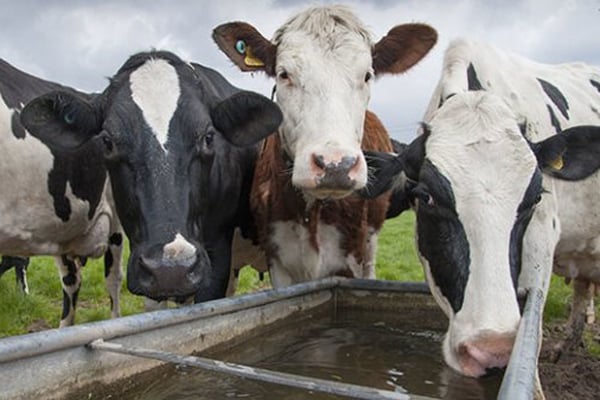Prime
Dairy farmers tipped on climate smart farming

A man (not in picture) pours milk in a milk-can in Uganda. PHOTO/FILE
What you need to know:
- The Food and Agricultural Organisation says the livestock sector contributes 18 percent of greenhouse emissions globally, much higher than the transport sector.
Experts have urged dairy farmers to embrace climate-smart agriculture to protect the environment.
Mr Victor Yamo, the farming campaigning manager at World Animal Protection, a non-governmental organisation, during the African Dairy Conference held last Thursday, said climate-smart farming is key to sustainable agriculture.
He noted that dairy farming was among the key issues which were raised in the Africa Climate Change Summit that was held early this month in Nairob, Kenya.
Mr Yamo said :“The dairy unit is having challenges because part of it is contributing to climate change. What happens is that the intensification of production leads to high production of methane gas and nitrous oxide, which are greenhouse gases that contribute to carbon emissions.”
“African dairy producers are affected by changes in climate because when there is drought and flooding, they get affected but...they are also part of what goes into climate change,” he added.
Mr Yamo also cautioned farmers on using excessive antibiotics on cattle, saying it could result in antimicrobial resistance. “Agricultural land is being converted into housing and that means we don’t have enough space. We have to look for alternatives to feed people and part of the alternative mechanism is alternative proteins,” he said.
A 2006 study conducted by the Food and Agriculture Organisation (FAO) shows that the livestock sector contributes to the largest human use of land.
“The total area occupied by grazing is equivalent to 26 percent of the ice-free terrestrial surface of the planet. In addition, the total area dedicated to feed crop production amounts to 33 percent of total arable land. In all, livestock production accounts for 70 percent of all agricultural land and 30 percent of the land surface of the planet,” the FAO report stated.
“About 20 percent of the world’s pastures and rangelands, with 73 percent of rangelands in dry areas, have been degraded to some extent, mostly through overgrazing, compaction, and erosion created by livestock action. The livestock sector is a major player, responsible for 18 percent of greenhouse gas emissions... This is a higher share than transport,” the report added.
Mr Samsom Akankiza , the Dairy Development Authority executive director, said Uganda’s dairy sector has grown over the years and that its products continue to gain demand and consumption within and beyond the region.
Greenhouse gases
The Food and Agricultural Organisation says the livestock sector contributes 18 percent of greenhouse emissions globally, much higher than the transport sector.





